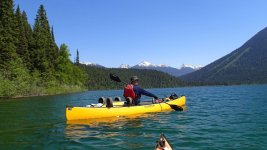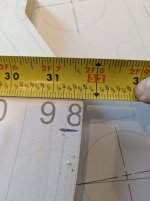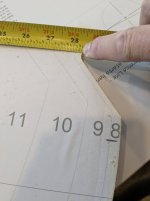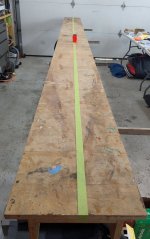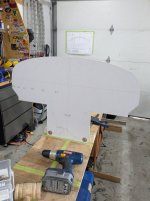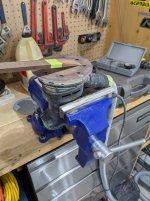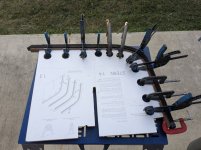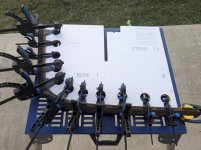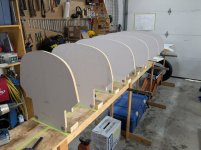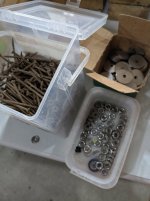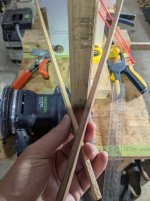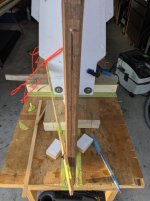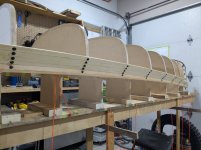I thought I would post my build here as this site is such a great resource for building my Kite. Plenty of Jonathan Winters designs built here as well as many of those builders lending advice when needed. I was able to look though build threads and see pictures by Stripper Guy, Memaquay, Alan Gage, Dogbrain, Gama1214, Blackrock and others. Hopefully this thread will add to that collective knowledge aiding future builders.
I’ve built a few boats now. I started with a fuselage frame SOF kayak, then I helped my daughter build a stitch and glue kayak. I followed that up with a strip built kayak for my wife. I had planned on building myself a kayak but after a back injury I don’t find the seated kayak position comfortable for long days. I bought a Clipper Caribou S a couple of years ago now and have really enjoyed paddling it with a double blade. I find it very nice in the river and still pretty decent on lakes. I don’t have a lot of experience with different canoes but I know what I like in a hull after years in kayaks. On a recent trip I was thinking I’d like to try a something a little more efficient over distance as well as a little harder tracking in the wind. Since I already have the materials on hand I thought why not attempt to build that boat.
When looking for a solo canoe that fit that description I wasn’t really seeing plans for anything like it in a high volume version. Designers should consider offering their plans in LV, MV and HV versions. The Kite sounded great and I really loved the look of the tumble home. I’m a bigger guy and learned a long time ago that boats paddle poorly overloaded. Slower speed, slow turning and often not so stable. I find the volume and stability of my Caribou excellent so I thought I’d attempt scaling a Kite up to similar dimensions. I messaged Noah’s and Stripper Guy for opinions on scaling. Both thought it would be fine. I also messaged Alan Gage about his thwart material plus I included a rough build plan in case it sent up any red flags to him. Thanks guys for the responses and special thanks for responding while on vacation SG. This is me in my Caribou on a trip this spring.
I’ve built a few boats now. I started with a fuselage frame SOF kayak, then I helped my daughter build a stitch and glue kayak. I followed that up with a strip built kayak for my wife. I had planned on building myself a kayak but after a back injury I don’t find the seated kayak position comfortable for long days. I bought a Clipper Caribou S a couple of years ago now and have really enjoyed paddling it with a double blade. I find it very nice in the river and still pretty decent on lakes. I don’t have a lot of experience with different canoes but I know what I like in a hull after years in kayaks. On a recent trip I was thinking I’d like to try a something a little more efficient over distance as well as a little harder tracking in the wind. Since I already have the materials on hand I thought why not attempt to build that boat.
When looking for a solo canoe that fit that description I wasn’t really seeing plans for anything like it in a high volume version. Designers should consider offering their plans in LV, MV and HV versions. The Kite sounded great and I really loved the look of the tumble home. I’m a bigger guy and learned a long time ago that boats paddle poorly overloaded. Slower speed, slow turning and often not so stable. I find the volume and stability of my Caribou excellent so I thought I’d attempt scaling a Kite up to similar dimensions. I messaged Noah’s and Stripper Guy for opinions on scaling. Both thought it would be fine. I also messaged Alan Gage about his thwart material plus I included a rough build plan in case it sent up any red flags to him. Thanks guys for the responses and special thanks for responding while on vacation SG. This is me in my Caribou on a trip this spring.

